After a long life in the saddle, Phil Anderson is at an age where most people lighten their load rather than take on more work. Asked why he agreed to join the board of the rebooted Amy Gillett Foundation, a charity dedicated to reducing the number of cyclists killed on the roads, the retired Tour de France competitor offers a blunt response.
“It is not a safe place out there,” he says. “People are dying. I don’t think you need a better reason than that to support a cause.”
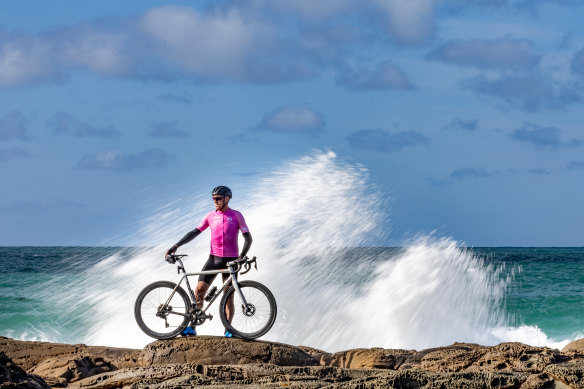
Phil Anderson, the first Australian to wear the yellow jersey in the Tour de France, has joined the rebooted board of the Amy Gillett Foundation.Credit: Jason South
The Amy Gillett Foundation, established in honour of an Australian Olympian and national team cyclist killed by a motorist during a training ride in Germany nearly 20 years ago, appeared to have reached the end of the road in March when it unexpectedly closed its doors owing about $1.6 million.
Instead, the decision by the foundation’s previous board to place the charity into liquidation triggered an extraordinary rescue mission by a well-connected group of business figures with a shared passion for cycling, admiration for Gillett and belief the foundation still had important work to do.
The mission was led by two ex-chairmen of the foundation, former AusCycling boss Duncan Murray and pollster and political adviser Mark Textor, and Kate Bates, an Olympic cyclist whose sister was a close friend of Gillett.
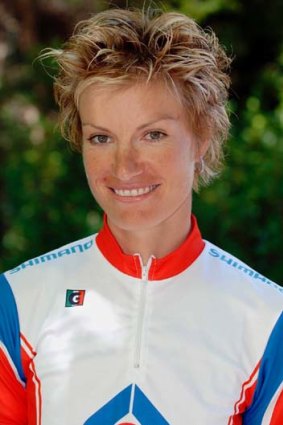
Olympic and national team cyclist Amy Gillett.
With help from influential friends, they succeeded in doing what no one could remember being tried before – saving a charitable organisation already in liquidation.
A complex, five-month process to shift the foundation into administration and, finally, back under the control of a newly appointed board and management team culminated on Wednesday when the Federal Court issued orders confirming the corporate revival.
On Sunday morning, when nearly 4000 amateur cyclists gather in the Victorian towns of Lorne and Apollo Bay to ride in the charity’s annual endurance race – Amy’s Grand Fondo – and other events along Australia’s most famous stretch of coastal road, Gillett’s parents Mary and Denis Safe will be faces in the crowd.
Mary Safe says she was shocked and devastated to learn the charity had gone bust and is delighted by its rebirth.
“We are just in awe of how this has been managed and turned around,” she says. “Our spirits have gone from rock bottom to climbing steadily, and the fact that Amy’s Grand Fondo can go ahead is great.”
She has agreed to join the new board alongside Anderson, Murray, Textor, Bates and Michael Drapac, an international property investor whose son Damion was killed in a cycling accident.
“It is very much keeping that emotional attachment to Amy and her life and her legacy, which is really important to our family,” she says. “I am quite often in contact through the foundation with people whose loved one has been killed on the roads. There is so much more work to do and a lot of it needs to tackle attitudinal change.”
Genevieve Sexton, a specialist in corporate restructuring law and a partner with Melbourne firm Arnold Bloch Leibler, says there was a series of complicated steps that needed to be taken to convince the liquidators, the administrators and, finally, the Federal Court, that the foundation could resume as a going concern.
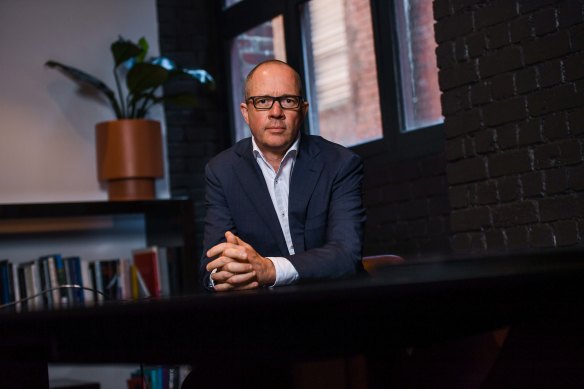
Duncan Murray, the survivor of a potentially fatal cycling accident, says the Amy Gillett Foundation was too precious to disappear. Credit: Joe Armao
The first of these was to persuade the liquidators, Cor Cordis, to appoint consultancy firm KPMG as administrators. The second was for Murray and Textor to sign a deed of company arrangement, with the support of creditors, which guaranteed foundation staff would be paid, and the company would have enough working capital to remain solvent.
The necessary cash infusion, about $450,000, was donated by some of Murray and Textor’s business associates, cycling buddies and supporters of the foundation – economist Guy Debelle, National Australia Bank chairman Phil Chronican, property developer and philanthropist Daniel Besen, investment manager Geoff Wilson, former Australian Sports Commission chairman John Wylie, company director David Moffatt and Drapac.
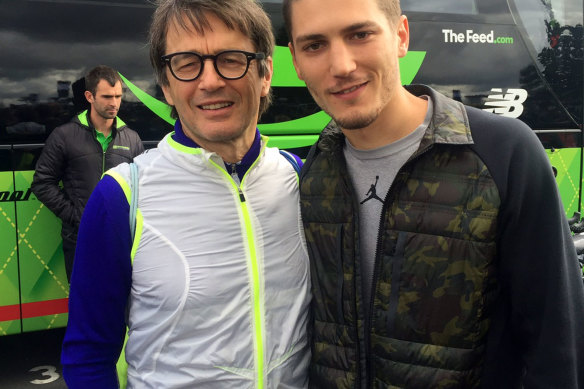
Michael Drapac with his late son Damion, who was killed while cycling in 2019.
KPMG, restructuring experts Ian Carson and Sexton and a team of corporate lawyers all volunteered time and expertise. Sexton says that unless this work was done pro bono, the cost of the salvage operation would have been prohibitive.
The foundation ran into financial trouble after entering into a federal government contract to provide training and other services beyond its capacity to deliver. Bates, the foundation’s new managing director, says the charity will focus on its original purpose of improving the relationship between cyclists and motorists.
The foundation stresses mutual obligation between road users and calls out bad behaviour by cyclists as well as motorists. “If we want respect, we have to give respect,” she says. “Everybody deserves to get home safe and nobody in a car wants to be responsible for the death of someone else.”
The foundation previously convinced state governments to pass laws requiring motorists to give cyclists a one-metre buffer on the road. Murray says the rebooted foundation will push for mandatory flashing tail lights on bikes at all times to improve cyclist visibility. “That won’t make us popular, but it will save lives,” he says.
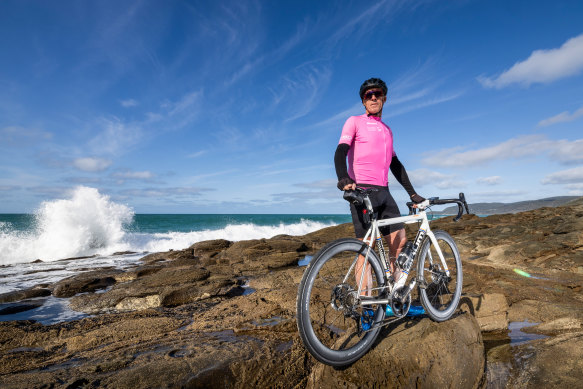
Anderson says he has a simple, powerful reason for supporting the foundation. “It’s not a safe place out there. People are dying.”Credit: Jason South
Murray says the foundation was too precious to disappear while its work remained unfinished.
“I have watched good friends like Mary and Denis Safe and Mike Drapac grieve the loss of their children. I have been hit and nearly killed whilst out riding in 2006 and, despite how much I love the sport, still feel a mixture of guilt as a father, as well as fear, every time I head out for a ride.
“It just needed to be saved and pulled back from the brink, so its work could continue.”
Start the day with a summary of the day’s most important and interesting stories, analysis and insights. Sign up for our Morning Edition newsletter.